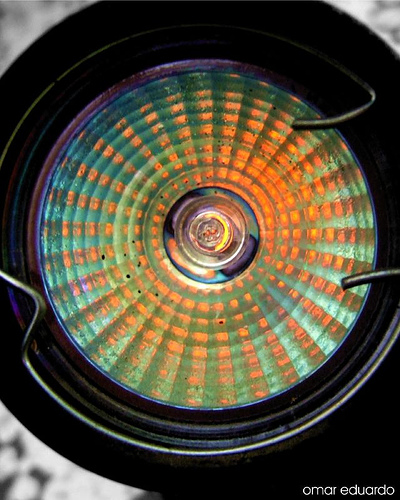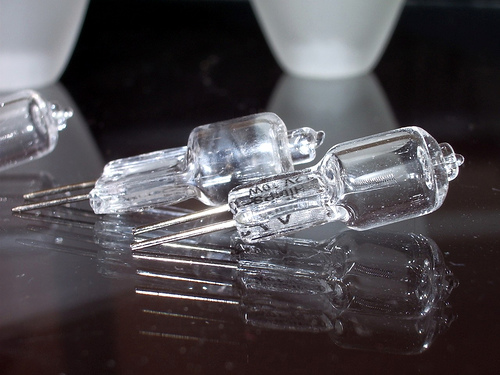Most of us grew up knowing only one kind of light bulbs. But as modern technology develops so does the technology that we use to illuminate our houses — especially during the night. Many households have converted away from incandescent bulbs to other forms of lighting and, due to the rising cost of energy and guidance from local governments, have leaned more on energy saving light bulbs for their houses.
One type of light considered to be energy efficient is the energy saving incandescent, otherwise known as a halogen bulb. Energy saving incandescent lamps are still considered a type of incandescent lighting although they do achieve better efficiency than the standard, conventional types.
Halogen lighting is 25% more efficient and can last up to three times longer than traditional light bulbs. The percentage may not be much when you compare it with light emitting diode (LED) or compact fluorescent lamps (CFL) but it is a better choice than traditional incandescent lighting.

photo credit: Omar Eduardo via photopin cc
Halogen bulbs contain a capsule that holds a type of gas around a filament that helps to increase bulb efficiency. Light is produced by way of heating the filament of tungsten metal until it is white hot. With the traditional incandescent, the tungsten slowly vaporizes and deposits on the inside of the bulb until it becomes too thin to be capable of carrying electric current at which time, the bulb burns out. Halogen bulbs, because they are filled with a special gas, allows the vaporized tungsten to be deposited back onto the filament instead of the inside wall of the bulb. This is mainly the reason why halogen bulbs last longer and are more efficient compared to their traditional counterparts.
A disadvantage of the halogen bulb though is that its gains can easily be negated by the fact that extra energy is needed by an air conditioner to cool the room where the bulb is being used because it can exude heat. LEDs, on the other hand, produce 3.4 btu’s/hour, compared to 85 for incandescent bulbs.
Like the LED, halogen bulbs do not contain mercury in its manufacture, which is a good thing because mercury can be dangerous when a bulb breaks.
Halogen lamps are said to provide an excellent color rendition. Their pure white light makes them a good choice for certain fixtures. When used as a table lamp, where you read, it’s brightness does not strain the eyes. For fixtures that serve the purpose of highlighting artworks, photos, crystal or architectural features, the white light produced by halogen bulbs are great to make them appear vibrant. Outdoor fixtures also benefit from halogen bulbs as they cast a brighter, easy-to-see-by light.
Compared with traditional incandescent lamps, halogen bulbs can be a little more expensive but because they are 25% more efficient, they are less expensive to operate. They also do not give out that warm glow that the traditional ones do. The halogens also have the tendency to burn hotter than other bulbs so extra care must be given when handling them. When the outer shell breaks, it can pose a hazard and the inner bulb may explode when hit by moisture. You must be careful when handling and disposing of them.
We have several fixtures that are halogen here in our apartment and it’s generally a very popular method of lighting here in Germany. But we’re slowly switching many of them to LEDs. What kind of lighting do you use in your home?



